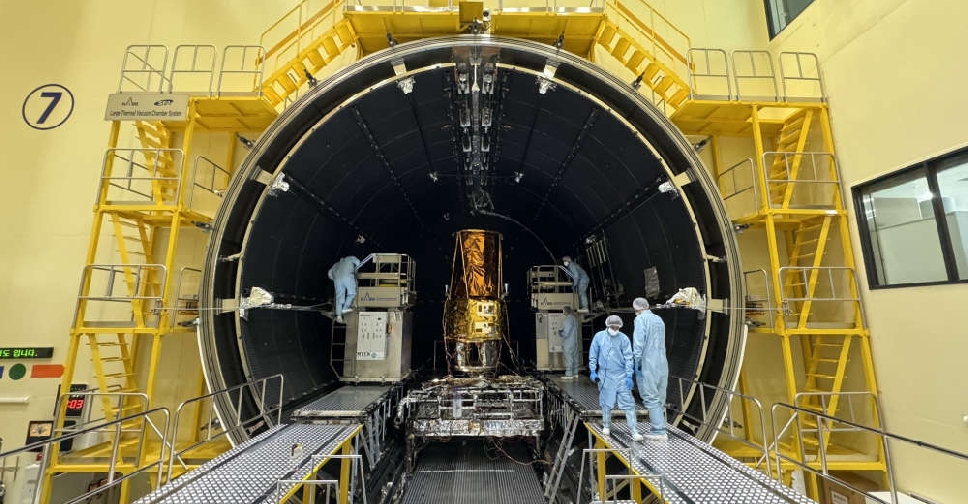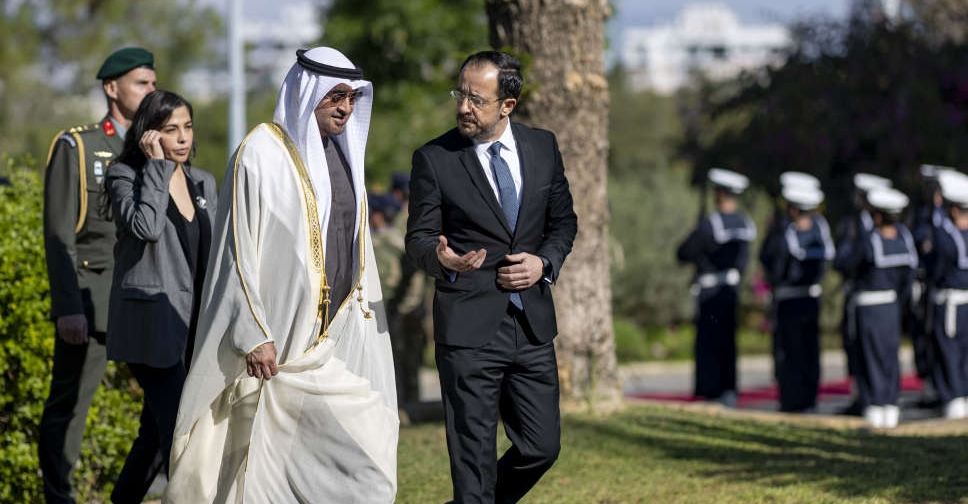
The Mohammed bin Rashid Space Centre (MBRSC) has begun environmental testing on MBZ-SAT satellite, after transporting it to the Korea Aerospace Research Institute (KARI) testing facility.
The tests, which will last around two months, aim to ensure that the satellite can withstand the challenges of launch and operation in space.
A 36-member team of engineers from MBRSC is currently in South Korea overseeing the preparations.
MBZ-SAT, which is fully developed and built by a team of Emirati engineers, is scheduled for launch no earlier than October 2024.
Following the successful completion of the environmental testing phase, MBZ-SAT will be ready for transport to the United States, where following its arrival, it will be prepared for the scheduled launch.
The satellite will be launched on a SpaceX Falcon 9 rocket during the Transporter-12 Rideshare mission.
Key highlights from the commencement of environmental testing on MBZ-SAT, after transporting it to the Korea Aerospace Research Institute (KARI) testing facility. This phase includes Thermal Vacuum (TVAC), Vibration, Acoustic, and Mass Properties testing. pic.twitter.com/ajKdEgqSrs
— MBR Space Centre (@MBRSpaceCentre) June 13, 2024
Environmental testing phases
The satellite’s environmental testing sequence will commence with Thermal Vacuum (TVAC) testing, where it will be subjected to simulated space conditions of extreme temperature and vacuum.
Following TVAC, the satellite will undergo Vibration testing, which assesses its structural integrity and ability to withstand the mechanical stresses encountered during launch and operation.
Subsequently, the satellite will undergo Acoustic testing, replicating the intense sound pressure levels experienced during launch, to ensure it can withstand such conditions without damage.
Finally, Mass Properties testing will be conducted to precisely measure and characterise the satellite's mass distribution, aiding in its accurate deployment and trajectory calculations in space. This sequential testing approach ensures thorough evaluation of the satellite's readiness for safe and reliable operation in space.
Most advanced satellite in the region
MBZ-SAT, equipped with one of the region's most powerful cameras, can capture high-resolution images of areas smaller than a square metre, meeting the increasing commercial demand for such images and establishing the UAE as a centre of high-tech space technology development and innovation.
The MBRSC will offer rapid turnaround of captured data round-the-clock, sharing it with users globally through an advanced system.
This imagery solution can support a wide variety of uses within mapping and analysis, environmental monitoring, navigation, infrastructure management and disaster relief efforts.



 UAE President receives official welcome at Presidential Palace in Nicosia
UAE President receives official welcome at Presidential Palace in Nicosia
 Rain hits parts of UAE: Dubai Police issues public safety SMS alerts
Rain hits parts of UAE: Dubai Police issues public safety SMS alerts
 UAE condemns terrorist shooting at Bondi Beach
UAE condemns terrorist shooting at Bondi Beach
 UAE condemns shooting at Brown University in US
UAE condemns shooting at Brown University in US
